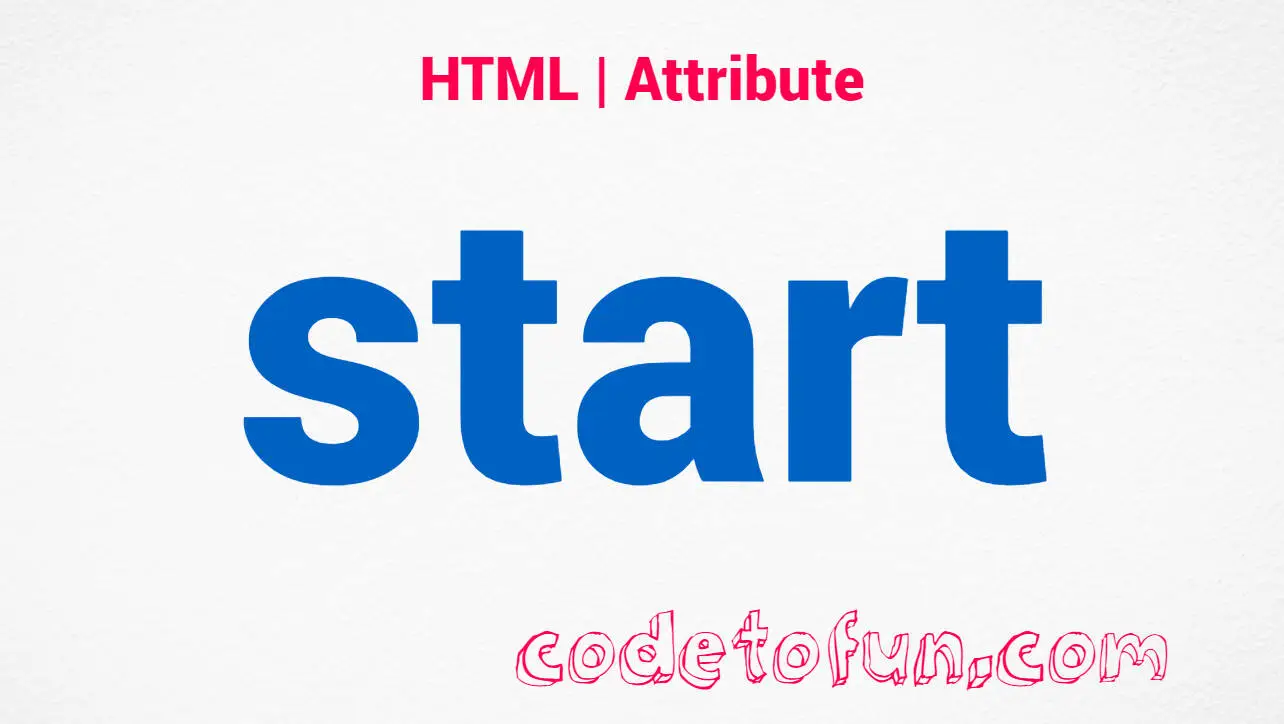
HTML Basic
HTML Reference
- HTML Tags
- HTML Deprecated Tags
- HTML Events
- HTML Attributes
- accept
- accept-charset
- accesskey
- action
- align
- alt
- as
- async
- autocomplete
- autofocus
- autoplay
- bgcolor
- border
- charset
- checked
- cite
- class
- color
- cols
- colspan
- content
- contenteditable
- controls
- coords
- data
- data-*
- datetime
- default
- defer
- dir
- dirname
- disabled
- download
- draggable
- enctype
- enterkeyhint
- for
- form
- formaction
- headers
- height
- hidden
- high
- href
- hreflang
- http-equiv
- id
- inert
- inputmode
- ismap
- kind
- label
- lang
- list
- loop
- low
- max
- maxlength
- media
- method
- min
- multiple
- muted
- name
- novalidate
- onabort
- onafterprint
- onbeforeprint
- onbeforeunload
- onblur
- oncanplay
- oncanplaythrough
- onchange
- onclick
- oncontextmenu
- oncopy
- oncuechange
- oncut
- ondblclick
- ondrag
- ondragend
- ondragenter
- ondragleave
- ondragover
- ondragstart
- ondrop
- ondurationchange
- onemptied
- onended
- onerror
- onfocus
- onhashchange
- oninput
- oninvalid
- onkeydown
- onkeypress
- onkeyup
- onload
- onloadeddata
- onloadedmetadata
- onloadstart
- onmousedown
- onmousemove
- onmouseout
- onmouseover
- onmouseup
- onmousewheel
- onoffline
- ononline
- onpagehide
- onpageshow
- onpaste
- onpause
- onplay
- onplaying
- onpopstate
- onprogress
- onratechange
- onreset
- onresize
- onscroll
- onsearch
- onseeked
- onseeking
- onselect
- onstalled
- onstorage
- onsubmit
- onsuspend
- ontimeupdate
- ontoggle
- onunload
- onvolumechange
- onwaiting
- onwheel
- open
- optimum
- pattern
- placeholder
- popover
- popovertarget
- popovertargetaction
- poster
- preload
- readonly
- rel
- required
- reversed
- rows
- rowspan
- sandbox
- scope
- selected
- shape
- size
- sizes
- span
- spellcheck
- src
- srcdoc
- srclang
- srcset
- start
- step
- style
- tabindex
- target
- title
- translate
- type
- usemap
- value
- width
- wrap
- HTML Global Attributes
- HTML Status Code
- HTML Language Code
- HTML Country Code
- HTML Charset
- MIME Types
HTML start Attribute

Photo Credit to CodeToFun
🙋 Introduction
The start attribute is a valuable feature in HTML that is used with ordered lists (<ol>) to specify the starting value of the list.
This attribute provides flexibility when you want to customize the numbering of ordered list items, allowing you to begin the list from a specific number rather than the default value of 1.
🎯 Purpose of start
The primary purpose of the start attribute is to define the starting value of an ordered list.
By default, ordered lists start at 1, but the start attribute allows you to set a different initial value.
This can be useful in situations where you're combining multiple lists or need a specific sequence for your ordered list items.
💎 Values
The start attribute accepts numerical values to determine the starting point of the ordered list. The value assigned to start represents the number at which the list should begin. For example:
<ol start="5">
<li>Item 5</li>
<li>Item 6</li>
<li>Item 7</li>
</ol>🧠 How it Works
In this example, the ordered list starts at 5 instead of the default 1.
📄 Example
Here's a simple implementation example of the start attribute in an HTML document:
<ol start="3">
<li>Introduction</li>
<li>Background</li>
<li>Main Content</li>
<li>Conclusion</li>
</ol>🧠 How it Works
In this case, the ordered list starts at 3, providing a customized numbering for the list items.
🔄 Dynamic Values with JavaScript
Similar to other HTML attributes, you can also use JavaScript to dynamically set the start attribute. This can be useful in scenarios where you want to adjust the starting value based on user interactions or specific conditions. Here's a brief example:
<script>
// Dynamically set the start attribute for an ordered list
document.getElementById("dynamicList").start = 10;
</script>🧠 How it Works
In this script, the start attribute is dynamically set to 10 for an ordered list with the id "dynamicList."
🏆 Best Practices
- Use the
startattribute when you need to customize the starting value of ordered lists to better suit the structure of your content. - Be mindful of the sequence when combining multiple ordered lists with different starting values to ensure a logical flow.
- Test your HTML documents across various browsers to ensure consistent rendering and support for the
startattribute.
🎉 Conclusion
The start attribute is a valuable tool for controlling the starting value of ordered lists in HTML.
By incorporating this attribute, you can enhance the organization and presentation of your content according to your specific requirements.
👨💻 Join our Community:
Author

For over eight years, I worked as a full-stack web developer. Now, I have chosen my profession as a full-time blogger at codetofun.com.
Buy me a coffee to make codetofun.com free for everyone.
Buy me a Coffee












If you have any doubts regarding this article (HTML start Attribute), please comment here. I will help you immediately.